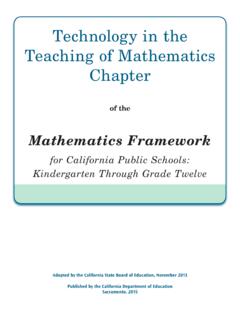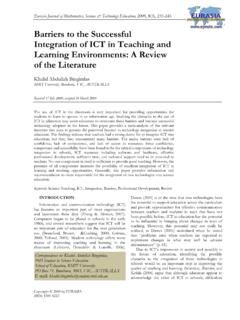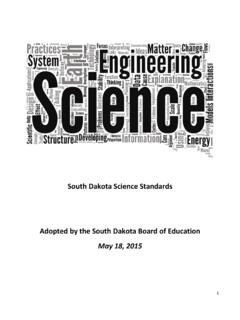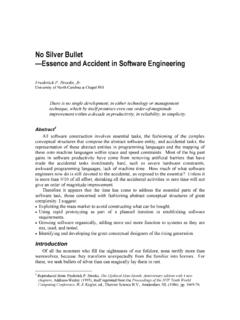Transcription of Aeronautics for Introductory Physics
1 WITH YOU WHEN YOU FLY: Aeronautics for Introductory Physics A joint project of NASA Aeronautics and the American Association of Physics Teachers Table of Contents Overview 4. Physics Aeronautics : A Contextual Approach for learning Physics 4. About NASA Aeronautics 5. About the AAPT 5. Standards and Best Practices 6. Standards 6. next generation Science Standards 6. Common Core State Standards 6. Theoretical Foundations 7. Building Conceptual Models of Flight Physics 7. Modeling Method of Instruction in Physics 8. Levels of Inquiry 9. learning Cycle 10.
2 Scientific Thinking 12. Inquiry Lesson/Lab: Scaling and Paper Airplanes 13. Literary/Data Analysis: Wings According to Size 20. Successful Flight Test of Shape-Changing Wing Surface 29. Constant Velocity 30. Real-World Applications: Flying Speed 31. A Day in the Life of Air Traffic Control 34. Problem Set: Comparative Velocities 37. Problem Set: Vectors in Relative Velocities Problems 39. Real-World Applications: Estimating the Speed and Distance of an Airplane 43. Real-World Applications: Noise Doppler-Shift Measurement of Airplane Speed 52. New Acoustics Techniques Clear Path for Quieter Aviation 53.
3 Real-World Applications: Smart Skies 54. Fly by Math 54. Line Up With Math 55. Sector 33 55. Air Traffic Operations Lab Answering Big Questions About the Future of Air Travel 58. NASA Tool Helps Airliners Minimize Weather Delays 58. Interactive Demonstration: Pitot-Static Tube 59. Inquiry Lesson/Lab: Bernoulli Effect Lab 65. Problem Set: Bernoulli's Equation and Pitot-Static Tubes 73. Discovery Lab: Airplane Dynamics: Engine Thrust, Braking, and Lift 76. Uniform Acceleration 78. Literary/Data Analysis: Prepare for Landing 79. Shhhh! Keep it Down Please!
4 84. Application Lesson/Lab: Mobile Accelerometers 85. NASA-Pioneered Automatic Ground-Collision Avoidance System Operational 90. Terminal Velocity 91. Discovery Lab (Raw): Drag Stations Lab 92. Discovery Lab (Contextual): Drag and Aircraft Design 99. NASA Researchers to Flying Insects: Bug Off! 107. Inquiry Lesson/Lab: Viscosity Tubes 108. NASA Turns World Cup Into Lesson in Aerodynamics 116. Inquiry Lesson/Lab: The Physics of Soaring (and L/D ratios) 117. Problem Set: Glider Trajectory Problems 125. 2 Aeronautics for Introductory Physics : Table of Contents Literary/Data Analysis: Flying with Finesse 127.
5 Model Building: Developing a Model for Drag 132. Force Particle Inertia 137. Inquiry Lesson/Lab: Falling and Air Resistance (Qualitative) 138. Skyray 48 Takes Flight 143. Real-World Applications: Hanging an Airplane: A Case Study in Static Equilibrium 144. NASA Model Flies at Air and Space 150. Problem Set: Trimmed Aircraft Activity 151. Inquiry Lesson/Lab: Investigating Flight with a Toy Helicopter 157. Future Helicopters Get SMART 162. Interactive Demonstration: Lift Demonstrations 163. Inquiry Lesson/Lab: Measuring Lift with the Wright Airfoils 165.
6 Glow With the Flow 175. Problem Set: Lift-Velocity Relationship Problems 176. Problem Set: Lift Equation Problems 178. Model Building: Developing a Model for Lift 180. Inquiry Lesson/Lab: Rubber-Band-Driven Airplane Contest 190. Recalling a Record: X-43A Scramjet Sets New Hypersonic Record a Decade Ago 194. Real-World Applications: Helicopter Toy and Lift Estimation 195. Constant Net Force 200. Real-World Applications: Parachute Lab 201. Inquiry Lesson/Lab: Falling and Air Resistance (Quantitative) 206. Hitchhiking Sensors Capture Curiosity's Entry 212.
7 Problem Set: Simplified Aircraft Motion 213. Problem Set: Forces in a Climb 216. Interactive Demonstration: Demonstration of Newton's Third Law Using a Balloon Helicopter 219. 2-D Combination 221. Real-World Applications: Measuring the Flight Speeds of Fire Bombers from Photos: An In-Class Exercise in Introductory Kinematics 222. NASA Tests Radio for Unmanned Aircraft Operations 224. Problem Set: Aircraft Motion Activity 225. Energy 227. Literary/Data Analysis: A Hard Day's Flight 228. Literary/Data Analysis: In Wind and Weather 232. NASA Helicopter Drop Test a Smashing Success 235.
8 Rotational Motion 236. Real-World Applications: Circular Motion Studies with a Toy Airplane/The Airplane Experiment 237. Real-World Applications: Measuring the Moment of Inertia of an Airplane 241. Video: Flight Testing Newton's Laws Weight and Balance 242. Additional Resources 243. Literary/Data Analysis Activity: The 747 and its Competitors 244. NASA Resources 247. AAPT Resources 248. American Association of Physics Teachers 248. The Physics Teacher magazine 248. Additional Resources 249. Literature Resources 249. Leybold Lessons (and Laboratory Equipment) 249.
9 Other Aeronautics Education Resources 249. Aeronautics for Introductory Physics : Table of Contents 3. Overview Physics Aeronautics : A Contextual Approach for learning Physics There are many right ways to teach Physics . Teaching by inquiry in context is perhaps the most effective way to effectively teach Physics so that it becomes both relevant and practical. This educators' guide addresses a growing need for higher- level inquiry in the Physics classroom, provides a solid content base, and actively engages with topics necessary to the development of 21st century skills.
10 Context is provided from student experiences with flight as well as ongoing Aeronautics research. This document is the result of a Space Act Agreement between NASA and the American Association of Physics Teachers. This project is founded on teaching ideas presented by seasoned high school and college Physics teachers and articles that have appeared in the American Association of Physics Teachers' (AAPT). publication, The Physics Teacher. As such, all of these ideas are appropriate for high school or Introductory university level Physics courses, and have been reviewed by acting high school and college/university AAPT members.


















